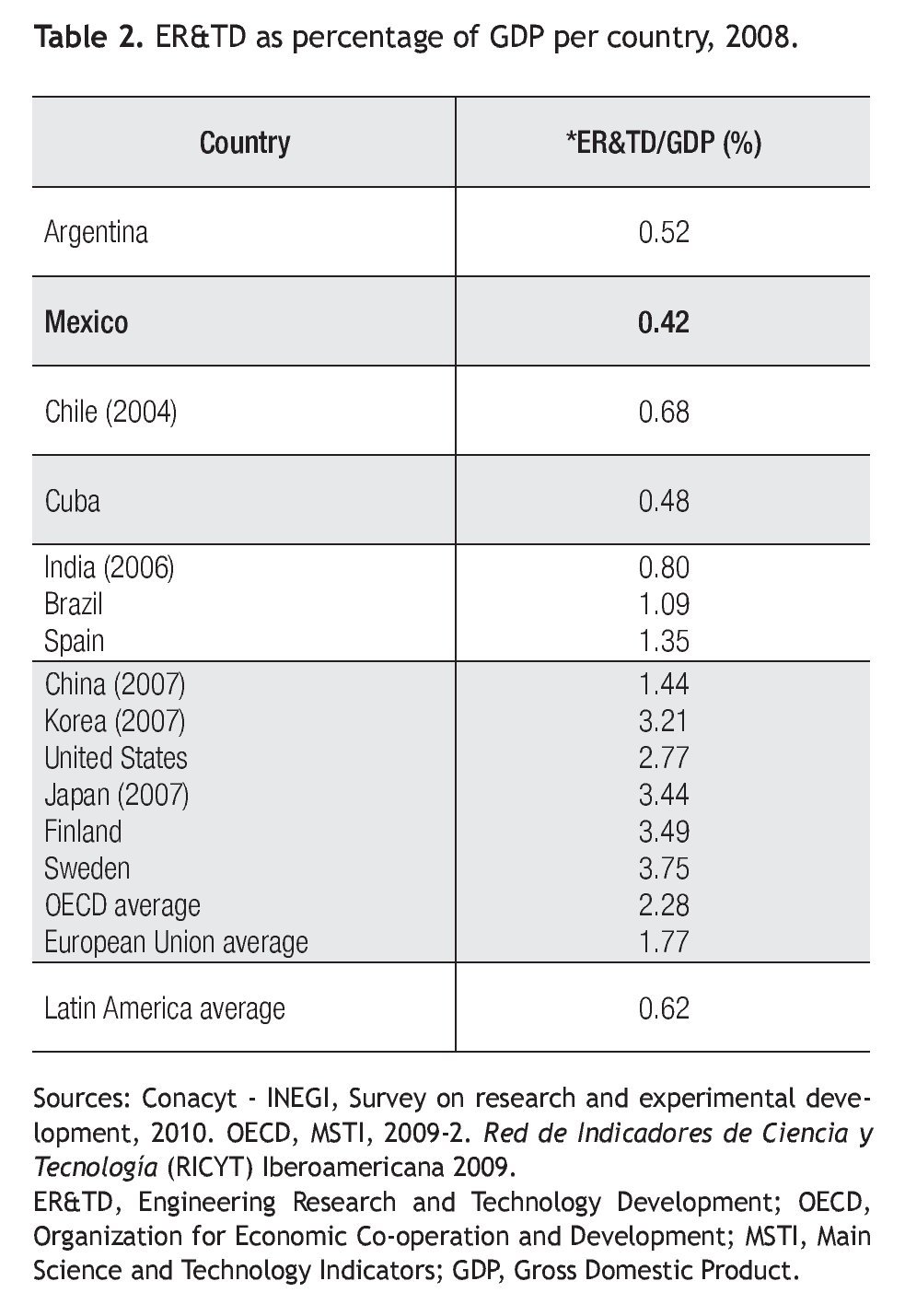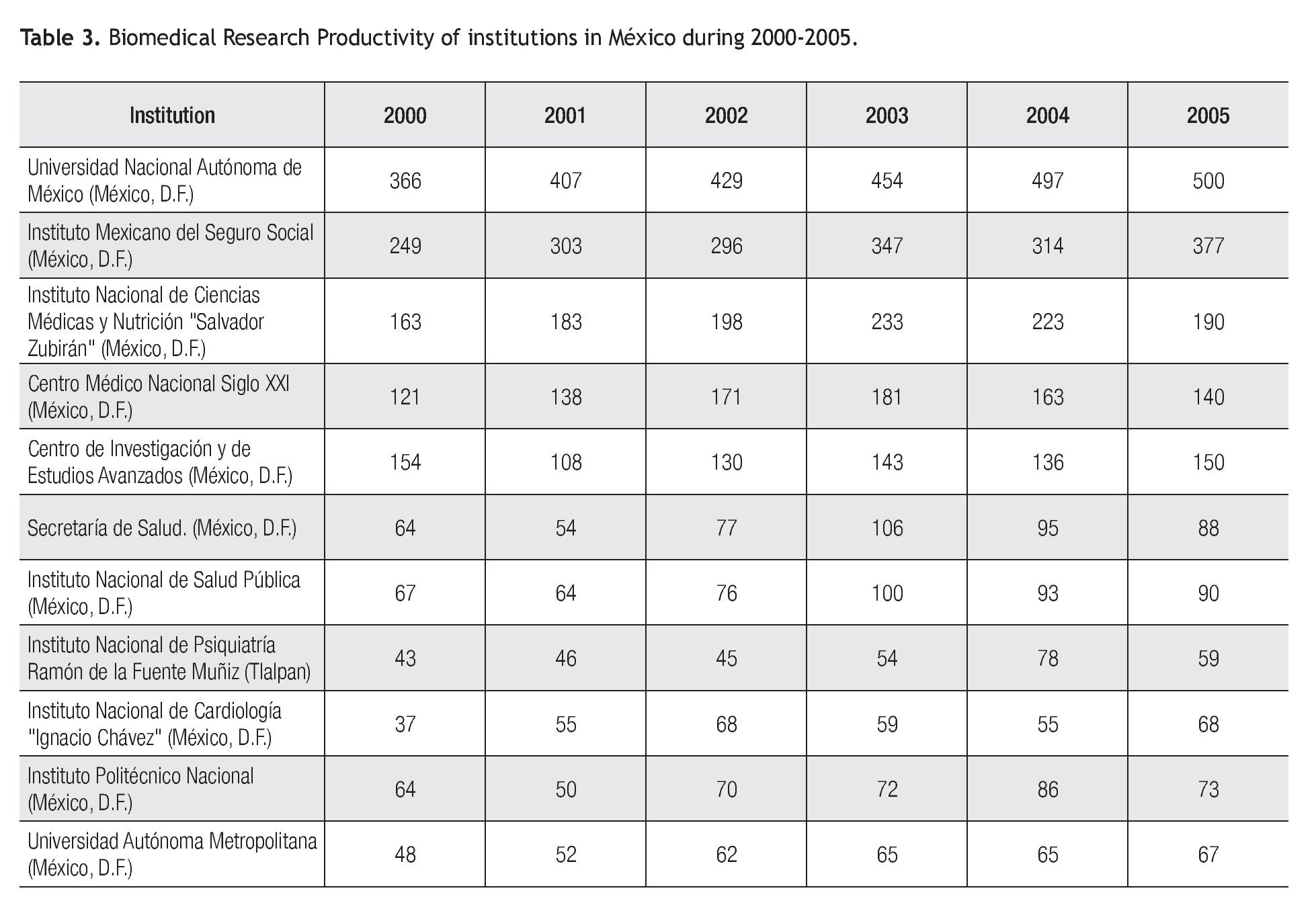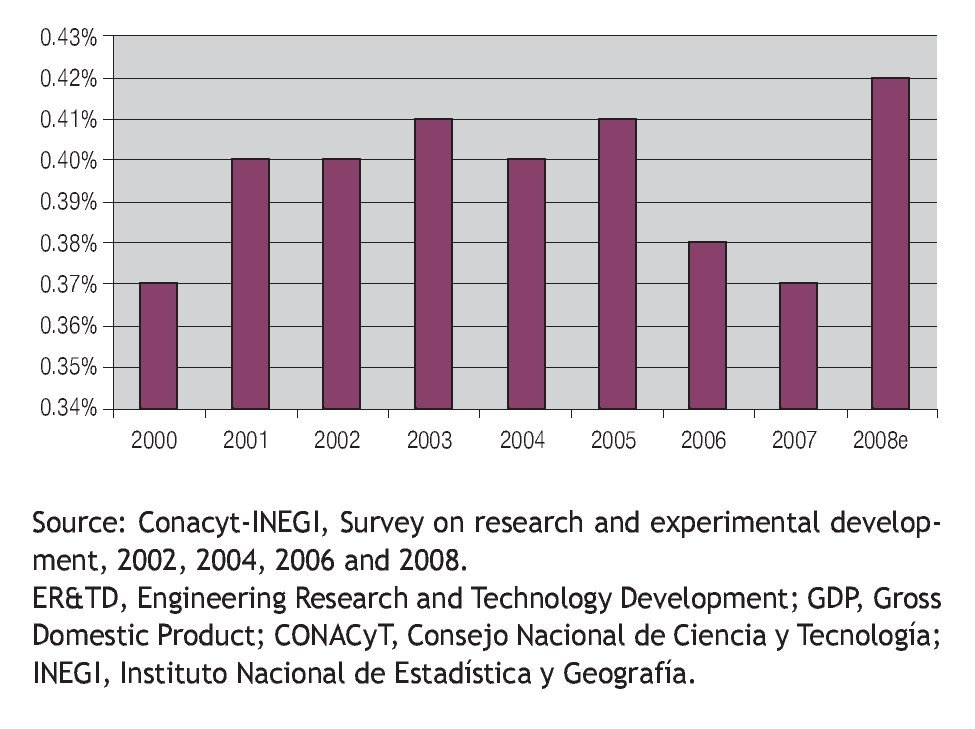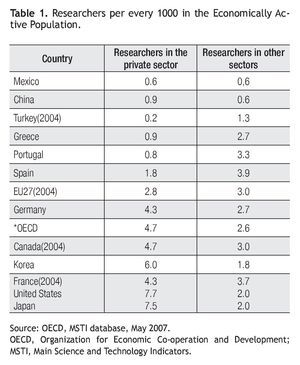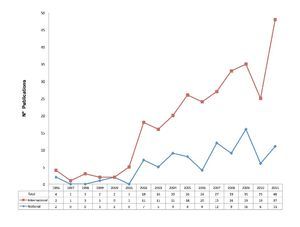A pesar de los problemas económicos de México, la investigación biomédica en nuestro país ha tenido un crecimiento significativo en las últimas décadas. Sin embargo, hay un déficit de inversión crónico en la ciencia y la tecnología. La cantidad que el gobierno federal invierte en investigación y desarrollo es solamente un 1% del Producto Interno Bruto (PIB). Por lo tanto, la participación de compañías públicas y privadas es muy importante. Esta breve revisión, discute los factores involucrados en el desarrollo de la investigación biomédica, en los sectores público y privado. También discute las acciones de la Fundación Clínica Médica Sur, en cuanto a la investigación biomédica.
Despite Mexico's economic problems, biomedical research in our country has grown significantly over recent decades. However, there is a chronic deficiency of investment in science and technology. The amount that the federal government invests in research and development still fails to be 1% of the Gross Domestic Product (GDP). Therefore, the participation of public and private companies is very important. This brief review discusses factors involved in the development of biomedical research in private and public sectors. It also discusses the Medica Sur Clinic & Foundation actions in biomedical research.
Introduction
One of the main factors that contribute to the economic growth of a country is scientific research. Different studies have shown that biomedical research has a direct effect on the health levels of the country in which it takes place and that an increase in the health of the general population is one of the main factors behind economic growth. Such studies also suggest that the return on investment in biomedical research is one of the highest, as much as 20 to one.1 That's why developed countries direct much of its economic as well as educational efforts at furthering investigation. Mexico should do so too. According to research made by The Mexican Commission on Macroeconomics and Health, up to a third of Mexico's economic growth between 1970 and 1990 can be traced back to improvements in life expectancy and mortality rates, which in turn can be traced directly to biomedical research done both within and outside the country.2 This work focuses on the different ways in which research takes place in Mexico, particularly within a private institution that has developed a successful biomedical research program despite the lack of financial and human resources and the lack of appropriate infrastructure in our country.3 While these shortcomings are a major obstacle in the development of biomedical research they do not impede it completely, but they do slow it down, making it hard to reap substantial benefits from it.
Biomedical Research in Mexico
Development of Biomedical Research in Mexico has been slow. Up to 1980, the number of researchers was 5 000, by 1990 it grew to 14 000, in 1999 the number was 25 000 and 38 000 in 2007, 30% of them in the National System of Researchers (SNI, in Spanish).4 That is 0.83 researchers per 1 000 people in the economically active population, against what happens in other countries: 2.86 in Argentina, 5.95 in Spain, 11.02 in Japan and about 10 in the United States of America (Table 1). On the other hand, the federal government's involvement in science and technology has been below one would expect; in 1995 it was 0.35% of the Gross Domestic Product (GDP) and 0.42% in 2000. In 2009, federal spending on science and technology was 45 974 million pesos, an amount representing 0.39 percent of GDP. Of those resources about 60% were destined to experimental research and technological development (ER&TD)5 (Figure 1). It was estimated that in the year 2000, among the 2.8 million businesses that made up Mexico's productive base (99% of them of micro and small size; 27 000 of medium size and 3 300 large ones with ISO 9000; 2 500 of them engaged in exporting), less than 300 made some kind of research and development. Moreover, it was observed that the private sector had a very low participation in national spending on research: in Mexico only 24%; in Brazil 40%; in Spain 50%; in Korea 73% and 80% in the United States of America (Table 2). To bolster research, technological development and business innovation, Mexico's government began in 2001 a program that gives tax breaks to companies that spend in those categories. This program has expanded substantially since 2005, amounting up to 4 500 billion pesos in tax credits which were granted to 622 businesses in 2007. As a result of this program, by 2007 the participation of the private sector in national spending on research had increased to 45.5% (Figure 2).
Figure 1. Evolution of ER&TD with respect to GDP, 2000-2008.
Figure 2. Structure of expenditure on science and technology by source of financing.
The number of people engaged in research and development in the private sector also increased considerably as a result of fiscal incentives given to the private sector so that they could invest more in research. Between 2000 and 2005 the number of researchers working in the private sector grew by 451%. In 2000, Mexico had 22 228 professionals involved in the conception or creation of new products or processes, of which only 19.7% (4 379 researchers) was in the private sector. By 2005, the total had risen to 43 922 with the private sector employing 45.3% (19 888 researchers)6 (Table 1).
What we would wish is that the development of Mexican biomedical research in the twenty-first century was parallel to the social and political transformations of our country. However, at the present time it would be important that Mexican biomedical research was supported by better and more comprehensive public projects for growth and development, but especially by a larger number of smart young students willing to devote their professional lives to the creation of new scientific knowledge in the field of biomedicine.
In this new millennium, as a country in full development, Mexico needs to leave behind the old structures that bind it to less developed societies, and place itself at the head of those who are willing to participate in more advanced projects. Achieving this goal requires many different things: many economic, political and social changes, some much harder to achieve than others.
However, there is a specific change that is absolutely indispensable, because without it nothing else can occur; this change consists in the Mexican society becoming aware that basic, determined and generous support, for science and technology is crucially important for the development of our country.
A major problem is that most spending on research and experimental development is still provided by the federal government.
Causal relationship between investment in science and technology and the economic and social development of a country is a well-established fact. Without adequate investment in those fields, Mexico will remain a laggard country. Medica Sur Clinic & Foundation, a private Mexican institution, does biomedical research because it was one of the major aims of the institution since it was founded, as we consider it one of the main ways in which we can make a significant contribution to our country. We form professionals in research and support them with training focused on scientific methodology, bioethics, good clinical practice, etc. Every institution seeking to develop or interested in developing biomedical research should take care in designing proper research programs and influencing students by involving them into the design and development of research.
The biomedical research done by our institution is supported financially by two main sources: one of them is the federal government (CONACyT); another is the institution itself. Sometimes external companies are interested in doing research in Mexico and they too provide support in some areas but unfortunately, this is not a frequent occurrence.
When trying to do biomedical research, researches have to look for other sources of financing which will allow them to develop their proposals. Besides the federal government and our institution there are some non-lucrative institutions, in Mexico and in other countries, which are committed to supporting research. These institutions make opportunities available for doing research on many fields of science (scientific or humanistic) through collaborations with foreign universities or research institutes interested in particular fields or by furnishing resources needed for the investigation. Nevertheless, almost all researchers have to seek out by themselves the resources needed to develop their ideas7 (Table 3).
Some institutions dedicated to support scientific research in Mexico are: Fundación Carso, Fundacion Miguel Aleman AC, Asociacion Mexicana de Hepatologia, Academia Nacional de Medicina de Mexico, Asociacion Mexicana de Gastroenterologia, and other medical associations which have specific programs focused on particular scientific subjects. There are also international institutions that provide resources for practicing biomedical research or for training researchers in world-class research centers around the world. Some of these institutions are: Fundación Carolina, Asociacion Alemana de Investigaciones Científicas, Facultad Latinoamericana de Ciencias Sociales (FLACSO), Consejo Internacional Para La Ciencia (ICSU), Organización De Las Naciones Unidas para la Educación, la Ciencia y la Cultura (UNESCO); there also related agreements between Mexico and other countries such as Germany, United States, Spain, etc.
Medica Sur Clinic & Foundation has been able to do research because of the support given to it by its leaders, who have taken up the challenge to do it. They care about creating research projects truly interesting to the scientific world, carried out with the highest quality in methodology and ethics; as a result of this, researchers from the institution are able to constantly publish valuable results in leading academic journals (Figure 3).
Figure 3. Productivity on publications performed by Medica Sur Clinic & Foundation since 1996 until 2011.
The institution is not only interested in doing biomedical research, but also in publishing the results obtained by its researches. Publishing is the real aim of research, as only through publishing is new knowledge communicated to the world and cooperation with other scientists achieved. Scientific productivity is measured by the quantity of papers published and this is what is taken in consideration when trying to get financial support from different sources.
Conclusion
It is necessary that private hospitals increase their share in financing biomedical research in Mexico and Latin America in order to improve in quality and quantity the productivity of our researches. The financial support given by the federal government is simply not enough.
Corresponding author: Nahum Mendez-Sanchez, MD, PhD.
Departments of Biomedical Research, Gastroenterology & Liver Unit, Medica Sur Clinic & Foundation. Puente de Piedra 150, Col. Toriello Guerra, Tlalpan. Z.P. 14050, Mexico City, Mexico.
Phone: (5255) 5606 6222 ext. 4215. Fax: (5255) 5666 4031.
E-mail: nmendez@medicasur.org.mx
Received: November 2011.
Accepted: November 2011





